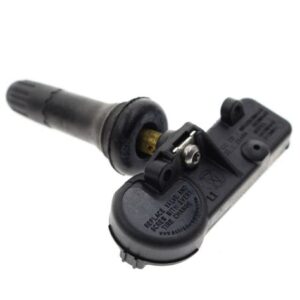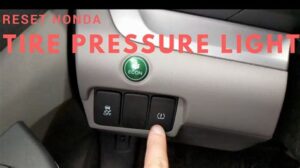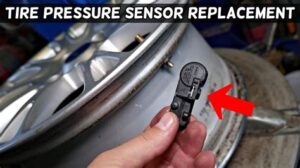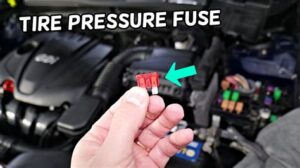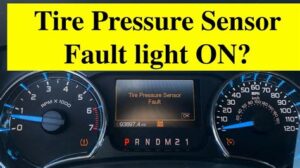Learn to reset your Tundra tire pressure sensor for optimal performance. Discover benefits, consequences of incorrect readings, and importance of regular maintenance.If you own a Toyota Tundra, understanding the tire pressure sensor system is essential for optimal vehicle performance and safety. Tire pressure sensors play a crucial role in monitoring the air pressure in each tire, ensuring you drive with the right amount of inflation. However, over time and with various adjustments, these sensors may require resetting to function accurately. In this blog post, we will explore the significance of regularly resetting your Tundra’s tire pressure sensor, provide a step-by-step guide for how to do it, and discuss the potential consequences of ignoring incorrect tire pressure readings. Additionally, we’ll highlight the benefits of maintaining proper tire pressure, helping you keep your Tundra running smoothly and safely on the road. Let’s dive into the details to ensure you get the most out of your vehicle!
Understanding the Tundra Tire Pressure Sensor
The Tundra Tire Pressure Sensor plays a crucial role in maintaining vehicle safety and efficiency. This sensor monitors the air pressure within the tires and sends real-time data to the vehicle’s onboard computer system. Understanding how this sensor works and its importance can greatly enhance your driving experience.
Modern vehicles, including the Toyota Tundra, are equipped with a Tire Pressure Monitoring System (TPMS) that utilizes these sensors. Here are some key points regarding its functionality and significance:
- Continuous Monitoring: The tire pressure sensor continuously checks tire air pressure levels.
- Alerts: If the tire pressure falls below or rises above recommended levels, the sensor triggers an alert on the dashboard.
- Improved Fuel Efficiency: Maintaining proper tire pressure leads to better fuel economy and overall vehicle performance.
- Safety: Proper tire pressure reduces the risk of tire blowouts, improving overall safety while driving.
In short, the Tundra Tire Pressure Sensor is not just a handy feature; it is essential for safe and efficient driving. Regular engagement with the sensor and understanding its readings are paramount for any Tundra owner.
Importance of Regular Sensor Resetting
The Tundra tire pressure sensor plays a crucial role in ensuring your vehicle operates safely and efficiently. However, like any electronic system, the sensors can lose accuracy over time or after certain events. This is why the regular resetting of your tire pressure sensors is not just a good practice—it is essential for several reasons:
- Accuracy in Readings: Over time, tire pressure sensors can become miscalibrated, leading to incorrect pressure readings. A regular reset ensures that your sensors provide accurate data, which is vital for proper tire performance.
- Improved Safety: Incorrect tire pressures can affect vehicle handling and braking. By resetting your tire pressure sensors regularly, you help maintain optimal tire pressure, which enhances overall safety.
- Fuel Efficiency: Improper tire pressure can result in increased fuel consumption. Regular sensor resettings keep your tire pressure in check, which aids in achieving better fuel efficiency.
- Prolong Tire Life: Consistently maintaining the correct tire pressure through regular sensor resets can lead to a longer lifespan for your tires, saving you money in the long run.
- Preventing Sensor Malfunction: Over time, dust and debris can accumulate on the sensors, affecting their performance. Regularly resetting the sensors helps in identifying potential issues before they escalate into costly repairs.
In summary, regular resetting of your Tundra tire pressure sensor is essential for maintaining safety, fuel efficiency, and the longevity of your tires. It’s a small maintenance step that can yield significant benefits.
Step-by-Step Guide to Resetting the Sensor
Resetting the Tundra tire pressure sensor is an essential maintenance task that ensures your vehicle operates safely and efficiently. If you notice your tire pressure light is illuminated or if you’ve recently changed a tire or adjusted the pressure, it’s crucial to reset the sensor.
Step-by-Step Instructions
- Verify Tire Pressure: Before proceeding, use a tire pressure gauge to check that all tires are inflated to the manufacturer’s recommended pressure. The pressure specification can usually be found on the driver’s side door jamb.
- Turn on Ignition: Without starting the engine, turn the ignition key to the ‘ON’ position. This will power the vehicle’s electrical systems.
- Access the Reset Button: Look for the TPMS reset button. In many Tundra models, this button is located beneath the steering wheel, near the brake pedal.
- Press and Hold the Reset Button: Hold the reset button down until the tire pressure light blinks three times and then turns off. This indicates that the system is resetting.
- Check the Dashboard: Release the reset button and turn the ignition back off. Start the engine and observe the dashboard to ensure the tire pressure warning light is no longer illuminated.
- Drive the Vehicle: For some models, you may need to drive the vehicle for a few minutes to allow the reset process to complete. Monitor the tire pressure light during this time.
Things to Keep in Mind
- If the light remains on after following these steps, double-check the tire pressures.
- Make sure the vehicle is on a level surface while checking tire pressures and resetting the sensor.
- Refer to your owner’s manual for model-specific instructions, as the process may vary slightly between different Tundra year models.
Regularly resetting your tire pressure sensor can enhance driving safety and fuel efficiency.
Following these steps will help maintain your Tundra’s tire pressure monitoring system effectively. Consistent checking and resetting of the sensor ensure your vehicle remains safe on the road.
Effect of Incorrect Tire Pressure Readings
Maintaining proper tire pressure is crucial for the safety and performance of your vehicle. Incorrect tire pressure readings can lead to a multitude of issues that affect not only your driving experience but also the longevity of your tires. Here are some key effects of having inaccurate tire pressure readings:
- Decreased Fuel Efficiency: Tires that are not inflated to the correct pressure create more rolling resistance, causing your engine to work harder and decreasing fuel efficiency.
- Poor Handling: Under-inflated or over-inflated tires can significantly affect the handling of your vehicle. This may lead to loss of control during sudden maneuvers or adverse weather conditions.
- Increased Tire Wear: Incorrect pressure can lead to uneven tire wear. Under-inflated tires tend to wear out on the edges, while over-inflated tires wear down in the center.
- Risk of Blowouts: Over-inflation increases the risk of tire blowouts, especially when driving on hot pavement. This can pose a severe safety risk to the driver and passengers.
- Impact on Braking Distance: Driving on improperly inflated tires can increase braking distance, making it more difficult to stop your vehicle quickly in an emergency.
- Increased Maintenance Costs: Continuous driving with incorrect tire pressure leads to quicker tire degradation and may necessitate more frequent replacements, increasing your overall maintenance costs.
In conclusion, it is essential to regularly check and maintain proper tire pressure to prevent these issues. Inaccuracy in tire pressure readings can have severe implications for your vehicle’s safety and performance.
Benefits of Maintaining Proper Tire Pressure
Maintaining proper tire pressure is crucial for both vehicle safety and performance. Driving with incorrectly inflated tires can lead to a variety of issues, many of which can be avoided with regular checks and appropriate maintenance. Here are the key benefits of keeping your tires inflated to the correct pressure:
- Improved Fuel Efficiency: Keeping your tires at the recommended pressure can significantly enhance your vehicle’s fuel efficiency. Under-inflated tires create more rolling resistance, which requires more fuel for the same distance.
- Enhanced Safety: Proper tire pressure decreases the likelihood of blowouts and increases the effectiveness of your vehicle’s braking system. Tires that are inflated to manufacturer specifications are less likely to lose grip on the road, particularly in adverse conditions.
- Longer Tire Life: Maintaining the correct tire pressure can prolong the lifespan of your tires. Over-inflation or under-inflation leads to uneven wear, which can necessitate premature replacement.
- Better Handling and Performance: When tire pressure is within the recommended range, your vehicle will handle better, providing a more responsive and enjoyable driving experience. This means improved cornering and stability.
- Environmental Impact: Fuel-efficient driving thanks to properly maintained tires not only saves you money but also reduces your carbon footprint. Less fuel consumption means fewer emissions released into the environment.
In summary, regularly checking and maintaining proper tire pressure is essential for safety, cost savings, and environmental responsibility. Make it a habit to check your tire pressure at regular intervals, and always refer to your vehicle’s manual for recommended pressure levels.
Frequently Asked Questions
What is a tundra tire pressure sensor?
A tundra tire pressure sensor is a device that monitors the air pressure in each tire of a Toyota Tundra and alerts the driver if the pressure drops below a certain level.
Why is it important to reset the tire pressure sensor?
Resetting the tire pressure sensor is important after adjusting tire pressure or replacing tires to ensure the system accurately tracks the pressure and provides correct readings.
How do you reset the tundra tire pressure sensor?
To reset the tundra tire pressure sensor, turn on the ignition without starting the engine, then press and hold the tire pressure warning light until it blinks three times.
What are the symptoms of a faulty tire pressure sensor?
Symptoms include a constant warning light on the dashboard, false alerts about low tire pressure, or inconsistent pressure readings.
Can I reset the tire pressure sensor myself?
Yes, you can reset the tire pressure sensor yourself using the vehicle’s controls and following the owner’s manual instructions.
What should I do if the tire pressure sensor light remains on after resetting?
If the tire pressure sensor light remains on after resetting, check the tire pressures for proper inflation, and if they are correct, consult a professional mechanic to diagnose a potential sensor issue.
How often should I check tire pressure in my tundra?
It’s recommended to check tire pressure at least once a month and before long trips to ensure optimal performance and safety.
